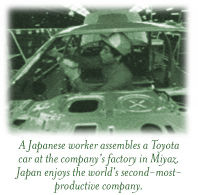|
Asia
is a continent of remarkable political, cultural, social and economic
diversity. Despite this, the region is thoroughly integrated in
the world economy. Asia includes the world’s most populous
country, the world’s largest democracy and the world’s
second most productive economy.
Economic
setbacks of the late 1990s in Korea, Indonesia, and Thailand are
thought to be a temporary exception to Asia’s unrivaled economic
growth over the past 50 years.
|

credits |
|
In
1997, as investor confidence waned, Southeast Asia suddenly found
itself in one of the worst financial crises of the postwar period.
The crisis threatened to spread economic malaise to fragile transition
economies and provoke recession in the industrial world. By
early 1998, the IMF had provided $36 billion to support reform efforts
as part of an international support package worth some $100 billion.
Because of the severity of the crisis, however, corrective measures
are likely to take several years.
|